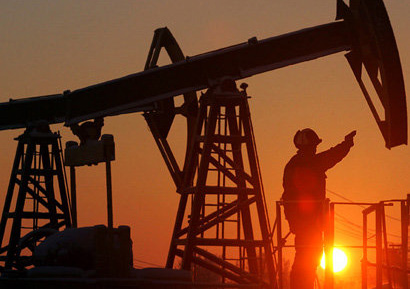OPEC's first output cut in eight years has earned the group $1.64 billion a day so far this year, up more than 10 percent from the second half of 2016, according to Reuters calculations based on OPEC figures for average production and its crude basket price up until June 20.
Compared with the first half of 2016, when oil prices sank to a 12-year low near $27 a barrel, the increase in income is a dramatic 43 percent, even though production by the Organization of the Petroleum Exporting Countries was little changed.
Income could rise in the rest of the year if, as OPEC hopes, a supply glut is banished. OPEC plus Russia and other non-OPEC producers agreed on May 25 to extend supply cuts to March, after an initial deal to keep them in place for the first half of 2017.
"I expect the gains for OPEC to be higher during the second semester 2017 due to a tight market in the third and fourth quarter, despite an oversupply from non-OPEC not tied to the OPEC agreement and higher-than-expected production from Libya and Nigeria," said Chakib Khelil, Algeria's former oil minister.
He estimated OPEC revenues rose about 8 percent in the first half of 2017, following its move at the end of 2016 to cut overall output by about 4 percent.
"The overall gain in revenues for OPEC would be in the 9 to 10 percent range for the whole of 2017 compared to 2016," the former minister said.
OPEC's decision in late 2016 to return to a policy of limiting supply, in cooperation with Russia and other non-members, marked the end of a two-year period in which the group pumped at will in a Saudi-led shift to curb rival output and boost market share, which accelerated a drop in prices.
"I think the extent to which Saudi Arabia bled revenue during 2014-2016 forced them back to the OPEC table before the job of really turning the screw on U.S. shale and other non-OPEC supply was completed," said David Fyfe, chief economist at trading firm Gunvor.
"However, the production deal has at least staunched the cash hemorrhage for now," he said.
The Reuters calculation is based on data from the International Energy Agency and figures published by OPEC about its production according to estimates by six secondary sources.
For the price, Reuters used the OPEC basket, an index of the crudes sold by the member countries.
It is intended to illustrate the general trend for oil revenues and does not aim to give exact estimates of countries' oil export earnings.
STICK WITH IT
OPEC and non-OPEC allies led by Russia initially agreed to cut about 1.8 million barrels per day (bpd) in the first half of 2017. But with the supply glut proving slow to shift, they agreed on May 25 to prolong the deal to the first quarter of 2018.
A drop in prices since then has prompted some OPEC delegates to question whether the deal is enough, but the group is in no rush to deepen its output cut.
Rising U.S. production has undermined some of the impact of the OPEC-led cuts. In addition, Libya and Nigeria, two OPEC members exempted from the curbs, have increased output although not by enough to alter the overall picture of lower OPEC output in the six-month period.
While OPEC states will welcome the extra revenue, it has not yet plugged budget deficits that have opened up. To balance its books, Saudi Arabia needs oil closer to $75 a barrel, asset management firm AB Bernstein estimates.
However, Fyfe of Gunvor said the higher earnings during the first half of this year will probably give producers sufficient motivation to keep going and even consider further measures.
Taking Dubai oil as a benchmark, prices so far in 2017 are 25 percent above last year's $41 average, while OPEC production in the same time is 2 percent, or 700,000 bpd, below 2016's average, he said.
"That arithmetic ought to persuade OPEC and Russia of the value of sticking with it, maybe cutting sufficient extra barrels to offset Libya and Nigeria increases and reaping the reward of higher overall 2017 revenues," said Fyfe.
"But the politics of apportioning further cuts will get messy," he added.
Khelil also said he thought OPEC needed to keep on with supply restraint beyond the expiry of the current deal to protect the increase in income earned this year.
"It would be in the best interest of OPEC to plan on continuing curtailing production after the end of March 2018 so as to maintain the 9 to 10 percent gain in revenues achieved in 2017," he said.
More about: #Oil-price















































